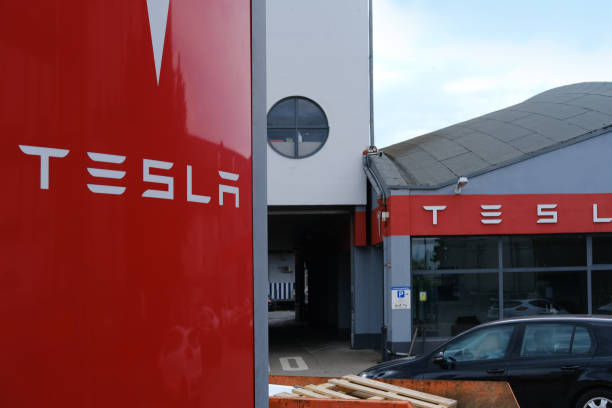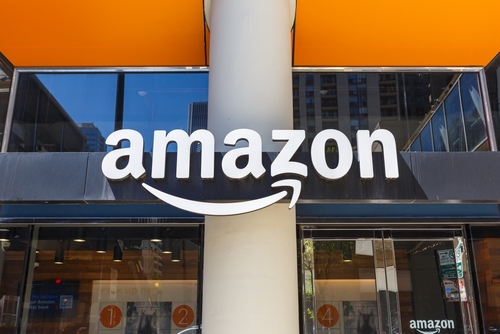Tesla's Underperformance Is Supported by Two Major Hopes


For investors, there isn't much hope for Tesla's first-quarter performance, as founder Musk's involvement with the Department of Government Efficiency (DOGE) under the Trump administration, combined with the U.S. sparking global trade tensions, has impacted Tesla's Auto sales.
First-quarter revenue sees a double decline
Tesla's first-quarter revenue of $19.34 billion not only fell below the market's expected $23.97 billion but also witnessed a double-digit decline, dropping by 9% year-on-year and 25% quarter-on-quarter. The main reasons for the deteriorating performance include a 13% annual decrease in global Auto deliveries to 336,700 vehicles, a continuous decline in average selling prices, and a slowdown in the energy storage business.
Tesla faces resistance in Europe, China, and even domestically in the U.S., making it challenging to boost sales even with price reductions. Moreover, according to the company, production line updates at four factories for the Model Y have affected Auto deliveries. Tesla's market share in the U.S., Canada, Europe, and China has been declining in recent quarters. Auto sales have been impacted, with net income dropping by 71% year-on-year to $410 million and a sharp 81% decrease quarter-on-quarter. Adjusted earnings per share were only $0.27, a 40% drop from the market's expected $0.41.
In the first quarter, Tesla produced approximately 362,000 vehicles, a 16% decrease year-on-year. Of these, there were 345,000 Model 3/Y vehicles and only about 17,000 vehicles of other models, representing declines of 16% and 18% respectively from the same period last year. Global Auto deliveries fell by 13% year-on-year. Among the delivered vehicles, there were 324,000 Model 3/Y vehicles and about 13,000 other models, showing year-on-year declines of 12% and 24% respectively. Auto revenue in the first quarter was $13.97 billion, down by 20% year-on-year, indicating a greater decline in revenue compared to Auto deliveries, revealing the pressure of selling Autos at lower prices. As Auto revenue accounts for 72.2% of total revenue, Tesla's performance still heavily relies on Auto sales.
Energy storage business and service-related revenue increased by 67% and 15% respectively in the first quarter of this year, showing continued growth. However, compared to the fourth quarter of last year, the growth rate has slowed, especially with service revenue showing a quarter-on-quarter decline, which is not a positive sign. The energy storage business at the Shanghai Gigafactory will be a point of future growth, with the potential to double capacity when needed. Service revenue includes charging services, contributing to gross profit and increasing by 25% year-on-year. Charging volumes for both Tesla and non-Tesla vehicle owners increased by 26% and 27% respectively.
Operating profit margin drops to low single digits
Additionally, it is worth noting that Tesla's operating profit margin has significantly declined. The first-quarter gross profit margin was 16.3%, a 104 basis point decrease year-on-year, staying flat compared to the previous quarter. Looking at the operating profit margin, it has dropped to a low single-digit figure of 2.1%, down from 10.8% in the third quarter of last year, marking consecutive declines over two quarters. In the fourth quarter of last year, the operating profit margin was 6.2%, indicating a severe challenge to Tesla's profitability. Fortunately, operating cash flow and free cash flow remain positive at $2.16 billion and $660 million respectively, marking increases of 791% and 126% year-on-year.
In summary, Tesla faced significant pressure in the first quarter of this year, and resolving these issues will not be easy. As for why Tesla's stock price could rise post-performance, a primary reason is Musk's announcement that he will significantly reduce his involvement with the U.S. government starting in May, dedicating only 1 to 2 days per week to related matters, and focusing the rest of his energy on Tesla's business development. Investors are hopeful that Musk may seek breakthroughs for Tesla in its operations.
Self-driving taxis and robots as breakthroughs
Competition in the new energy vehicle industry has intensified, and Tesla's sales have struggled to pick up without any new Auto releases. However, there might be a turning point in the second quarter.
According to Tesla's progress, in the first half of 2025, more affordable new Autos will begin production, utilizing both new and existing platforms. Although cost reductions may be lower than previously expected, utilizing underutilized production capacity is essential. Tesla's annual production capacity can reach 3 million vehicles, representing an increase of over 60% compared to 2024. If left unused, this would be a waste of resources that could be better utilized for production.
Furthermore, Tesla is expanding its autonomous ride-hailing service testing to Austin, in preparation for launching its Robotaxi service in June. Musk has shared videos on the social platform X demonstrating scenarios where users can "Call a Auto" via their phones, stating that they are "preparing for unsupervised autonomous driving." The Robotaxi plan is set to launch in the summer, starting with approximately 20 Model Y vehicles, each equipped with a safety driver for immediate intervention. If the rollout goes smoothly, there is a chance of a short-term boost in the stock price. The Cybercab is expected to start production in 2026.
Another hope lies in Optimus humanoid robots. The latest news is that Optimus' production is affected by a new round of restrictions on rare earth magnet exports by China, hindering short-term production. However, if Musk refocuses on the business, it is hoped that the impact can be mitigated.
When considering investing in Tesla, one must contemplate whether it is viewed as a Auto company or a tech company. As a pure Auto stock, it is already quite expensive, with a price-to-earnings (PE) ratio of 148, much higher than BYD's approximately 28 times. Viewing it as a tech stock allows for a higher premium.
By Tim Chen, MoneyClub financial writer
Having over 10 years of investment analysis experience and serving as a financial columnist.

.jpg)



